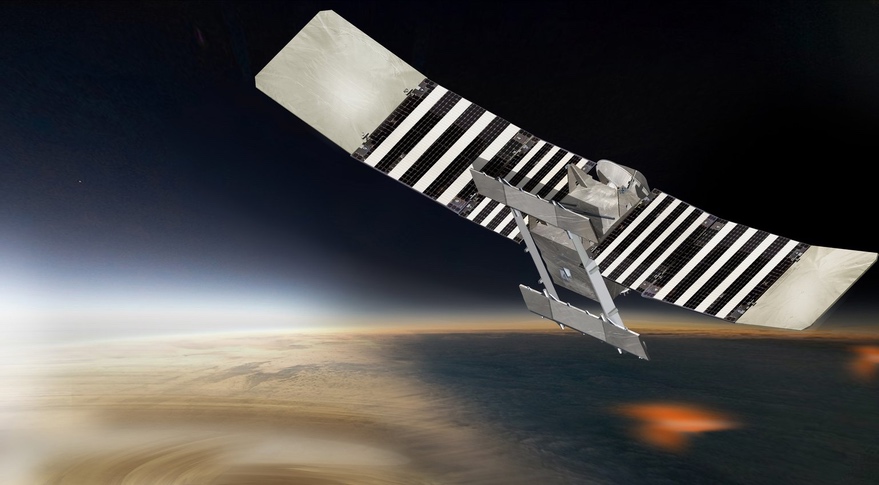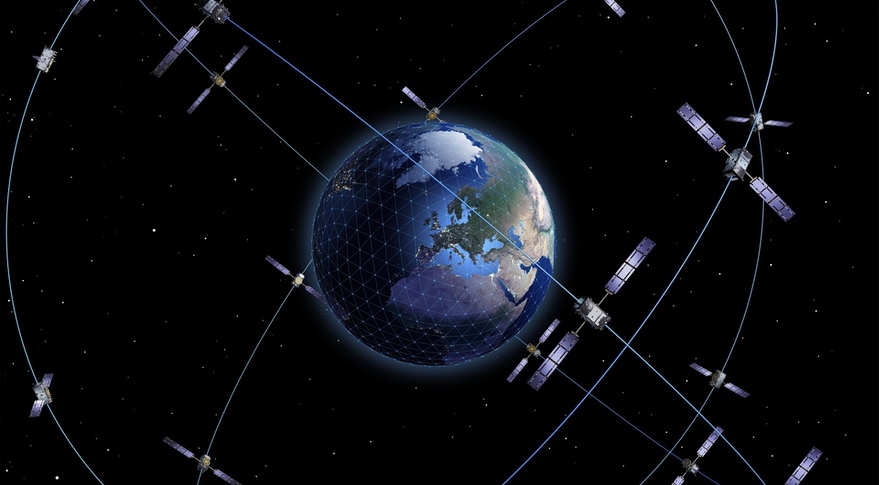X-37B space plane completes its sixth mission, lands after nearly 30 months in orbit
Original Publication Date: 2022-11-12 19:38

The X-37B space plane landed Nov. 12 at NASA’s Kennedy Space Center, Florida. It set a new endurance record after spending 908 days on orbit. This was the sixth mission of the crewless reusable plane. It carried several U.S. Military and NASA science experiments.
Delayed NASA Venus mission looks for a reprieve
Original Publication Date: 2022-11-13 13:59

NASA says it will delay launch of Venus orbiter mission by at least three years. Move is in response to problems with another mission, Psyche. VERITAS, like Psyche, is run by NASA's Jet Propulsion Laboratory. VERITAS will study the planet from orbit, DAVINCI+, will send probe into atmosphere.
ESA seeks funding for navigation technology programs at ministerial
Original Publication Date: 2022-11-12 23:15

European Space Agency proposes about 500 million euros over the next three years. One initiative, called FutureNAV, will support development of two missions. LEO-PNT would test a potential future satellite navigation constellation in low Earth orbit. Moonlight will develop communications and navigation services on and around the moon.
NASASpaceFlight.com
OneWeb launches 36 satellites aboard India's GSLV Mk.III rocket. Mission marks the first commercial launch for the GSLV rocket. Launch took place at 12:07 AM local time on Sunday, Oct. 23 (18:37 UTC on Saturday, Oct. 22)
Commercial Archives
After a delay caused by Hurricane Nicole, SpaceX launched its 52nd mission of 2022 with the Intelsat Galaxy-31 & 32 satellites using a flight-proven Falcon 9 to a geostationary transfer orbit (GTO) Falcon 9 first-stage booster B1051-14 made its final flight on this mission.
International Archives
China successfully launched the Tianzhou-5 mission to the Tiangong Space Station for cargo resupply. The mission launched at 02:03 UTC on Friday, Nov. 11 on a Chang Zheng 7 (Long March 7 in English) The launch was conducted from the Wenchang Satellite Launch Center, in China.
ISS Updates – Spaceflight101 – International Space Station

A veteran NASA spacewalker and an EVA rookie from Japan ended their week with nearly six hours of work outside the International Space Station. The restoration of the Station’s Mobile Servicing System started last year and continued in January to provide Canadarm2 with a new pair of grappling hands.
Featured – Spaceflight101

SpaceX launches a Falcon 9 rocket to the International Space Station. The Falcon 9 is the first of at least six cargo ships inbound to the U.S. Segment of ISS this year. The Dragon spacecraft will deliver science gear, supplies and maintenance hardware to the orbiting laboratory.
News – Spaceflight101

A Russian Rockot booster is set to blast off from the Plesetsk Cosmodrome at 17:57 UTC on Wednesday with the Sentinel-3B multi-function satellite. The rocket will carry the multi-function Sentinel-3B satellite with a Russian Rockot booster.
Re-Entry: Long March 11 Rocket Body – Spaceflight101

The CZ-11 fourth stage used leftover propellant for a partial de-orbit maneuver. It lowered its perigee to 120 Kilometers to significantly accelerate its orbital decay. It is reportedly built around a YF-50 main engine and conducts the orbital circularization after the three CZ-11 stages finish their job.
NASA to Brief Media on First Earth Water-Monitoring Satellite Mission

NASA will host a virtual media briefing to discuss the upcoming launch of the Surface Water and Ocean Topography (SWOT) satellite. The briefing will livestream on NASA Television, Facebook and YouTube, as well as the agency’s app and on its website. Questions can be asked on social media during the briefing using #AskNASA.
Satellites Help Scientists Track Dramatic Wetlands Loss in Louisiana

NASA-funded researchers quantified those wetlands losses at nearly 21 square miles (54 square kilometers) per year since the early 1980s. Some of those wetlands were submerged by rising seas; others were disrupted by oil and gas infrastructure and hurricanes. But the primary driver of losses was coastal and river engineering.
As Psyche Mission Moves Forward, NASA Responds to Independent Review

NASA and Jet Propulsion Laboratory (JPL) shared a response Friday to the results of an independent review board convened to determine why Psyche missed its planned 2022 launch opportunity. The review board – convened at the request of NASA and JPL – found a significant factor in the delay was an imbalance between the workload and the available workforce.
NASA to Discuss Psyche Independent Review Board Results

NASA will host a community town hall at 12 p.m. EDT (9 a.m. PDT) on Friday, Nov. 4. A media teleconference will be held at 1 p.m. (10 a.m. EDT) to discuss the findings and recommendations of a report by the Psyche mission independent review board. The board examined the causes of the Psyche mission missing its planned launch opportunity this year.
NASA Prepares to Say ‘Farewell’ to InSight Spacecraft

InSight’s seismometer has detected more than 1,300 marsquakes since the lander touched down in November 2018. The lander data has yielded details about Mars’ interior layers, its liquid core, the surprisingly variable remnants beneath the surface of its mostly extinct magnetic field.
NASA Solar System Ambassadors: Sharing the Science for 25 Years

NASA’s Solar System Ambassadors Program is celebrating its 25th anniversary in fall 2022. The program is funded by NASA’s Science Mission Directorate and is managed by NASA’’s Jet Propulsion Laboratory in Southern California. In the spirit of a genuine grassroots endeavor, the Solar System Ambassadors program was originally called the Galileo Ambassador Program.
Haunting Portrait: NASA’s Webb Reveals Dust, Structure in Pillars of Creation

The Pillars of Creation are set within the vast Eagle Nebula, which lies 6,500 light-years away. This scene was first captured by NASA’s Hubble Space Telescope in 1995 and revisited in 2014. As a result of the new MIRI image, astronomers now have higher-resolution data in mid-infrared light than ever before.
